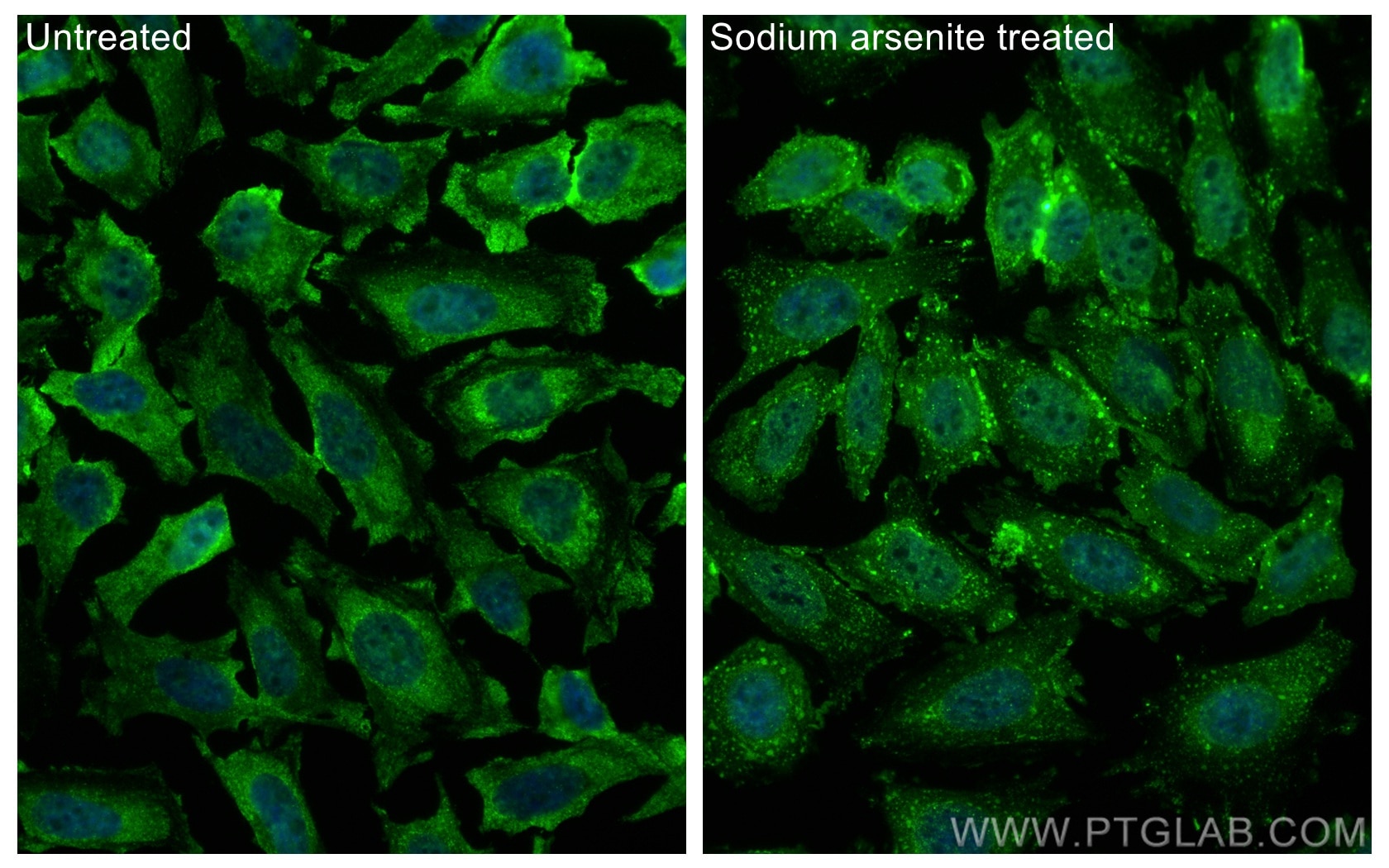Validation Data Gallery
Tested Applications
| Positive IF/ICC detected in | sodium arsenite treated HeLa cells |
Recommended dilution
| Application | Dilution |
|---|---|
| Immunofluorescence (IF)/ICC | IF/ICC : 1:50-1:500 |
| It is recommended that this reagent should be titrated in each testing system to obtain optimal results. | |
| Sample-dependent, Check data in validation data gallery. | |
Product Information
CL488-66021 targets CDC6 in IF/ICC applications and shows reactivity with human, mouse, rat samples.
| Tested Reactivity | human, mouse, rat |
| Host / Isotype | Mouse / IgG1 |
| Class | Monoclonal |
| Type | Antibody |
| Immunogen |
CatNo: Ag17958 Product name: Recombinant human CDC6 protein Source: e coli.-derived, PET28a Tag: 6*His Domain: 217-560 aa of BC025232 Sequence: QDLKKELKGFKTIMLNCMSLRTAQAVFPAIAQEICQEEVSRPAGKDMMRKLEKHMTAEKGPMIVLVLDEMDQLDSKGQDVLYTLFEWPWLSNSHLVLIGIANTLDLTDRILPRLQAREKCKPQLLNFPPYTRNQIVTILQDRLNQVSRDQVLDNAAVQFCARKVSAVSGDVRKALDVCRRAIEIVESDVKSQTILKPLSECKSPSEPLIPKRVGLIHISQVISEIDGNRMTLSQEGAQDSFPLQQKILVCSLMLLIRQLKIKEVTLGKLYEAYSKVCRKQQVAAVDQSECLSLSGLLEARGILGLKRNKETRLTKVFFKIEEKEIEHALKDKALIGNILATGLP 相同性解析による交差性が予測される生物種 |
| Full Name | cell division cycle 6 homolog (S. cerevisiae) |
| Calculated molecular weight | 560 aa, 63 kDa |
| Observed molecular weight | 65 kDa |
| GenBank accession number | BC025232 |
| Gene Symbol | CDC6 |
| Gene ID (NCBI) | 990 |
| Conjugate | CoraLite® Plus 488 Fluorescent Dye |
| Excitation/Emission maxima wavelengths | 493 nm / 522 nm |
| Form | |
| Form | Liquid |
| Purification Method | Protein G purification |
| UNIPROT ID | Q99741 |
| Storage Buffer | PBS with 50% glycerol, 0.05% Proclin300, 0.5% BSA{{ptg:BufferTemp}}7.3 |
| Storage Conditions | Store at -20°C. Avoid exposure to light. Stable for one year after shipment. Aliquoting is unnecessary for -20oC storage. |
Background Information
CDC6, also named as CDC18L and HsCDC18, belongs to the CDC6/cdc18 family. It is involved in the initiation of DNA replication and functions as a regulator at the early steps of DNA replication. It also participates in checkpoint controls that ensure DNA replication is completed before mitosis is initiated. It localizes in cell nucleus during cell cyle G1, but translocates to the cytoplasm at the start of S phase. The subcellular translocation of this protein during cell cyle is regulated through its phosphorylation by Cdks. Defects in CDC6 are the cause of Meier-Gorlin syndrome type 5 (MGORS5). MGORS5 is a syndrome characterized by bilateral microtia, aplasia/hypoplasia of the patellae, and severe intrauterine and postnatal growth retardation with short stature and poor weight gain. This antibody is a mouse monoclonal antibody raised against residues near the C terminus of human CDC6.
Protocols
| Product Specific Protocols | |
|---|---|
| IF protocol for CL Plus 488 CDC6 antibody CL488-66021 | Download protocol |
| Standard Protocols | |
|---|---|
| Click here to view our Standard Protocols |

